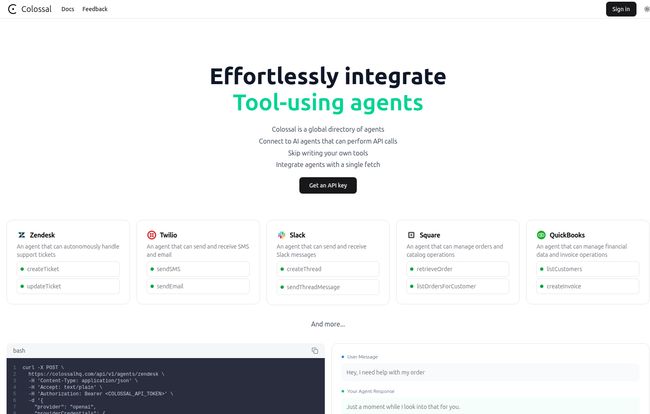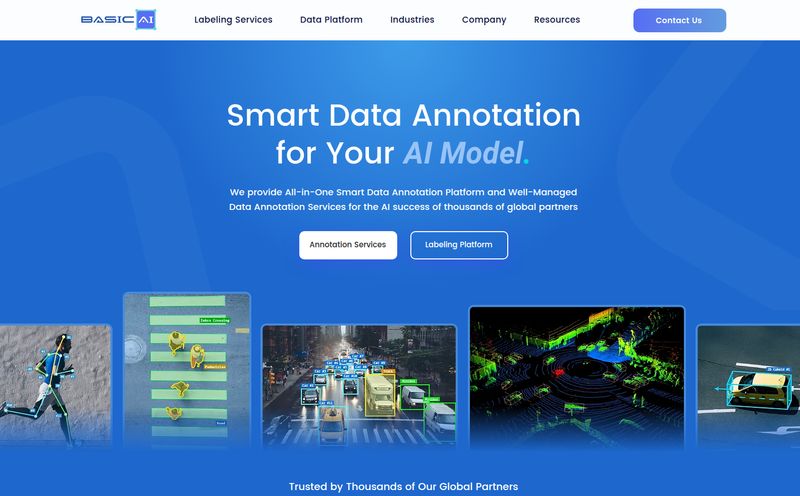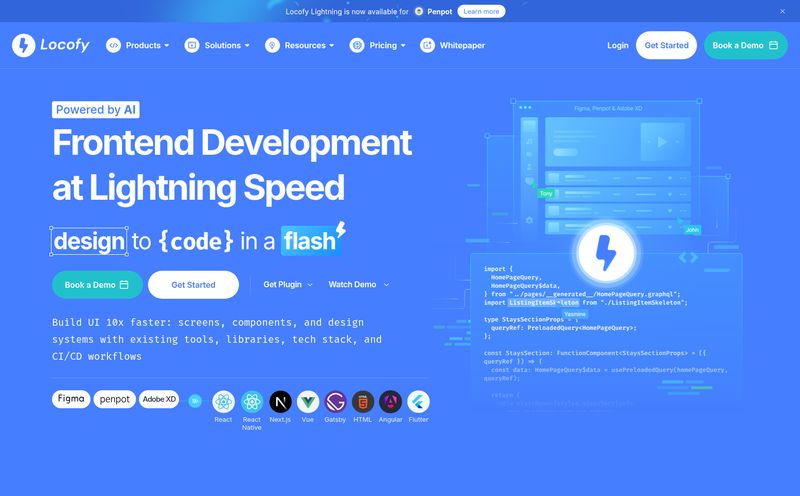I’ve been in the SEO and dev world long enough to see trends come and go. Remember the mad dash for AMP? Or when every client suddenly needed a parallax scrolling site? The latest gold rush, of course, is AI. Specifically, getting our applications to do more than just generate text—we want them to act. This is where LLM agents come in, and boy, is there a lot of noise about them.
The idea is fantastic: AI that can use tools, make API calls, and perform tasks. The reality? It often means spending days, or even weeks, buried in third-party API documentation that looks like it was written in another language, wrestling with OAuth tokens, and writing a mountain of boilerplate code. It’s a grind. A necessary one, but a grind nonetheless.
So when a tool like Colossal pops onto my radar, I’m immediately skeptical but also… hopeful. It promises to let you integrate tool-using agents with a single fetch. A global directory of agents, ready to go. Is it the real deal, or just another pretty landing page? Let’s take a look.
First Off, What Are We Even Talking About Here?
Let's get on the same page. An LLM agent isn't just a chatbot. Think of it less like a conversation partner and more like a hyper-competent, very specific intern. You don't just ask it a question; you give it a task. "Hey, a user just complained their package was broken. Can you create a support ticket for them in Zendesk?"
Normally, that requires your application to authenticate with Zendesk, format a request correctly, send it to the right endpoint, and handle the response. It’s a whole song and dance. An LLM agent, in theory, already knows how to do that dance. You just tell the agent what to do, and it handles the messy parts. Colossal's whole reason for being is to be the hiring agency for these digital interns.
The Colossal Proposition: Simplicity in a `curl` Command
Colossal’s homepage gets straight to the point. “Effortlessly integrate Tool-using agents.” It shows a clean interface with cards for agents like Zendesk, Twilio, Slack, Square, and QuickBooks. The dream, right? Connecting all these disparate services without writing custom code for each one.

Visit Colossal
The core promise is that you can plug these capabilities into your app with a single API call. Looking at their example, it's a simple `curl` command. You send a POST request to their API endpoint, and in the body, you specify what you need. For instance, you tell the Zendesk agent to `createTicket`, pass along the user's details and problem description, and provide your credentials.
And that’s it. That's the magic trick. You don’t need to know that Zendesk’s API wants the ticket subject in a field called `subject` or that the description goes into a `comment` object. Colossal abstracts that all away. Your code stays clean, and you can get back to building the parts of your application that are actually unique.
The Good Parts, The Not-So-Good Parts
What I Genuinely Like About This Approach
The most obvious win here is speed. As someone who’s managed projects with tight deadlines, the ability to skip a week of fiddling with an external API is huge. It’s the difference between hitting a launch date and telling your boss you need an extension because you’re stuck on an obscure authentication error. For rapid prototyping or building an MVP, this is an incredible accelerator. I could see an indie developer building a pretty powerful app in a weekend with a tool like this.
The centralized directory is also a nice touch. Instead of hunting around to see which services have easy-to-use APIs, you have a menu of pre-vetted options. It turns adding functionality into something closer to shopping than to heavy-duty engineering.
Okay, But What's the Catch?
There's always a catch, isn't there? Nothing is ever this simple without a trade-off. My experienced, slightly cynical brain immediately sees a few potential bumps in teh road.
For one, you're handing over the keys. Your app’s ability to send an SMS or update a customer record is now entirely dependent on Colossal. If their service goes down, your integration goes down. If they're slow to update an agent after, say, Slack changes its API, you're stuck waiting. This is the classic SaaS dilemma: you trade control for convenience.
Then there's the black box issue. The agents are pre-built. What if you need to perform a really specific, niche action in QuickBooks that they haven't created an agent function for? Tough luck. You either have to build it the old-fashioned way or hope they add it to their roadmap. This lack of customization could be a dealbreaker for larger, more complex applications with very specific needs.
So, Who Should Be Using This?
I don't think this is a one-size-fits-all solution. And that's fine! Different tools for different jobs. Here's my take on who wins with Colossal:
- Startups and Indie Hackers: Absolutely. If you're a small team trying to build something powerful and prove a concept quickly, the time saved is invaluable. It lets you punch above your weight, offering integrations that would normally require a much larger dev team.
- Product Managers and Prototypers: This is a fantastic tool for building functional prototypes without bogging down the core engineering team. You can test a workflow with a real Zendesk or Slack integration before committing massive resources.
- Large Enterprises: Mmm, probably not. A big company with a dedicated engineering team, stringent security reviews, and highly custom needs will almost certainly opt to build these integrations in-house for maximum control and security. But for a specific internal tool or a small departmental project? Maybe.
The All-Important Question: What's the Price?
Ah, the money question. As a CPC guy, I’m always curious about the business model. Is it pay-per-call, a tiered subscription based on usage, a flat monthly fee? So, I did what any normal person would do: I looked for the pricing page.
And… I found a “Page not found” error. Whoops.
As of this writing, the pricing is a mystery. This isn't uncommon for new tools in a soft launch or beta phase. My guess? They're probably still figuring it out. I'd expect a free tier for low-volume testing, with paid plans based on the number of API calls or agents used. But for now, your guess is as good as mine. It does mean you can likely get an API key and start tinkering without pulling out a credit card, which is always a plus in my book.
A Promising Shortcut with Clear Guardrails
So, what's my final word on Colossal? I'm genuinely intrigued. It addresses a real, throbbing pain point for developers. The drudgery of building and maintaining API integrations is something we all complain about, and Colossal offers a clean, elegant-looking solution.
It's not a silver bullet. The trade-off between speed and control is very real. You're buying into an ecosystem, and you have to be comfortable with its limitations. But for the right use case—fast-moving teams, prototypes, and applications built on common platforms—this could be a secret weapon.
I’ll be keeping an eye on this one. I want to see how their directory of agents grows and, of course, what the pricing model looks like when it finally appears. For now, it’s a promising tool that's worth getting an API key for and taking for a spin on a pet project.
Frequently Asked Questions
- What exactly is Colossal?
- Colossal is a platform that provides a directory of pre-built LLM agents. It allows developers to integrate functionalities from services like Zendesk, Twilio, and Slack into their applications with a single API call, without needing to write the integration code from scratch.
- How do I use a Colossal agent?
- You integrate an agent by sending a POST request to the Colossal API. In the request, you specify which agent you want to use, what action it should perform (e.g., `createTicket`), and the necessary data and credentials.
- Do I need to be an expert on the Zendesk or Twilio API to use this?
- No, and that's the main benefit. Colossal handles the direct communication with the third-party service's API. You only need to know how to call the Colossal API, which simplifies the process significantly.
- What are the main limitations?
- The primary limitations are a dependency on the Colossal platform, and the fact that you can only use the agent functionalities they have already built. If you need a custom or niche action, you might be out of luck until they add it.
- Is Colossal free to use?
- Currently, their pricing information is not available on their website. It's likely in a beta or early-access phase where you can get an API key to test it out, but a formal pricing structure has not been announced yet.
- Can I build my own custom agents on Colossal?
- Based on the available information, the platform is a directory of pre-made agents. It doesn't seem to be a framework for building your own custom agents, but rather for using the ones they provide.
Reference and Sources
- Colossal Official Website
- Emerging Architectures for LLM Applications (a16z) - For general context on LLM agents.



